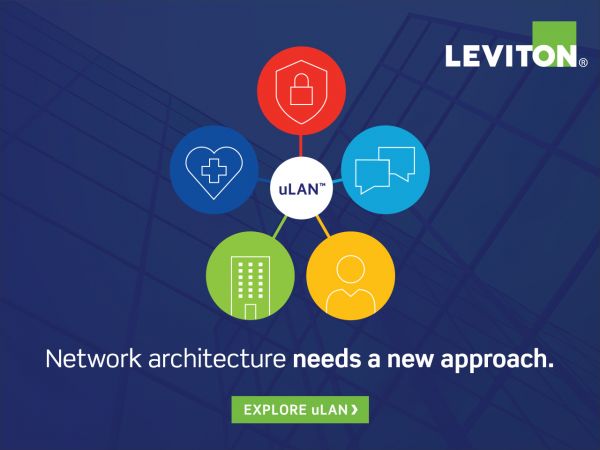Within the next decade, the global smart city industry is expected to grow dramatically. Smart cities are projected to double from 2020 to 2025, from $410 billion (€416.7 billion) to $821 billion (€834.4 billion). Within the smart city industry, the smart building market alone is expected to grow from 80.6B (€82B) to $328.6B (€334B) in 2029.
The rise of smart buildings can be attributed to multiple factors, including competition for tenants, an increasing emphasis on human centric design, and the need for buildings to meet sustainability goals. These factors are driving the adoption of smart buildings and, in turn, drive demand for smart building technology.
Smart buildings differ from traditional enterprise facilities in that each building system in a traditional enterprise facility is an island. Ethernet may be the common language within the core local area network (LAN) for devices such as workstations, WAPs, and VoIP phones, but historically all other systems speak their own language, with separate controls, support functions, and different managers responsible for them. However, in smart buildings, systems and utility applications systems like smart lighting, HVAC, security, Internet of Things (IoT) sensors, appliances, and others are becoming IP enabled and converging onto the core LAN for connectivity. Given this convergence, smart buildings require a networking backbone to enable the variety of its systems and devices to work in concert and operate efficiently.
However, building systems converging onto the core LAN is not as simple as connecting an IP-enabled device to the network. Each new utility application joining the network can require a wide range of power levels and data rates, creating complexity for systems managers. IoT connections add stress to the core LAN which is already providing connectivity to a variety of other devices. Additionally, each new device is a potential portal into the network, creating a network security vulnerability.
To enable building owners and IT professionals to adopt smart technologies more easily, Leviton has developed a new network architecture concept called uLAN™, or the utility LAN. In the uLAN architecture, utility building systems such as HVAC, lighting, security, communications, and consumer applications are separated from the core LAN. By segregating utility building systems in telecommunications rooms, building managers can establish a separate uLAN and create numerous benefits. uLAN allows for system convergence, consolidating disparate systems while alleviating strain on the core LAN. Functional systems managers can maintain control of their own building system while leveraging the benefits of IP convergence. The uLAN also allows for cost-effective IT equipment specifically for utility devices that vary in PoE and bandwidth, reserving tier one switching for the core LAN. And in terms of security, the uLAN allows for a firewall between the core LAN and uLAN, adding security to the core LAN.
Ultimately, the uLAN allows for smart technology adoption while achieving maximum network security, greater efficiency, and minimal disruption to the core LAN. A uLAN architecture provides smart building IT professionals the streamlined, efficient, smart buildings for the future.
Learn more about a uLAN and Leviton connectivity here.









